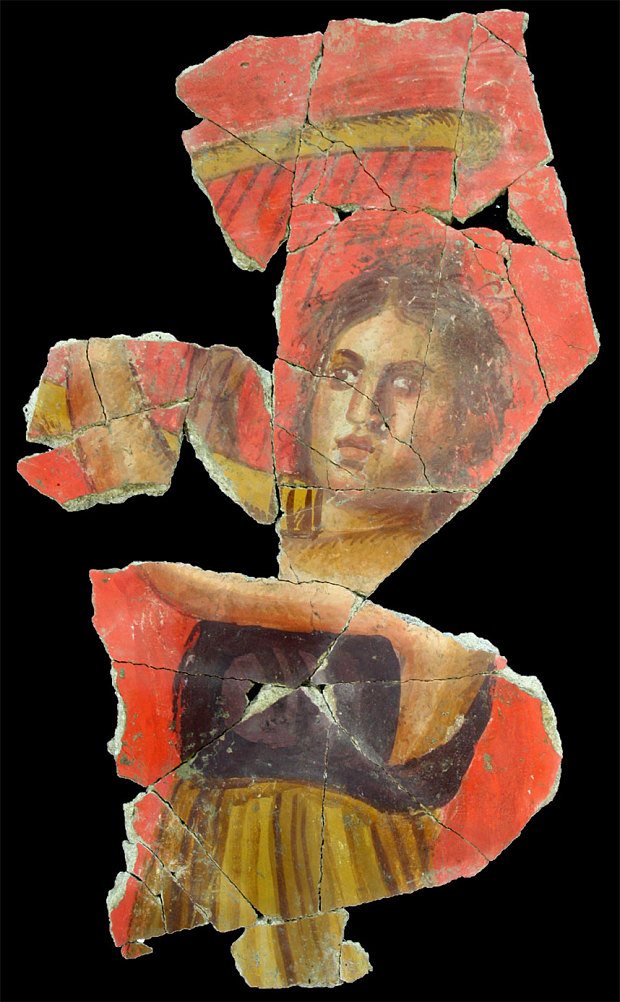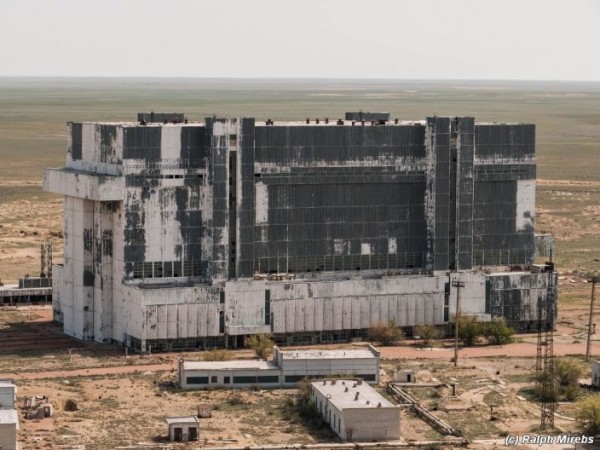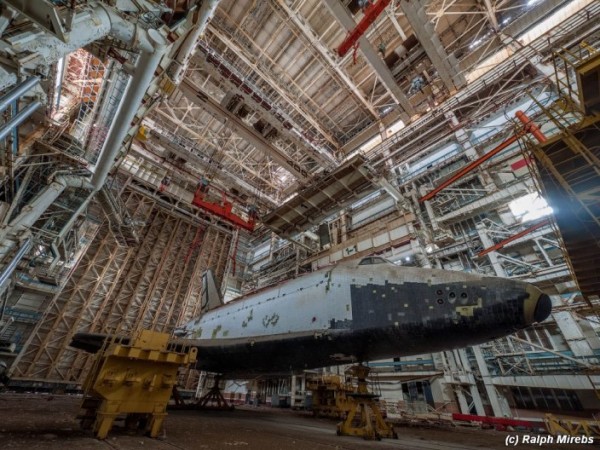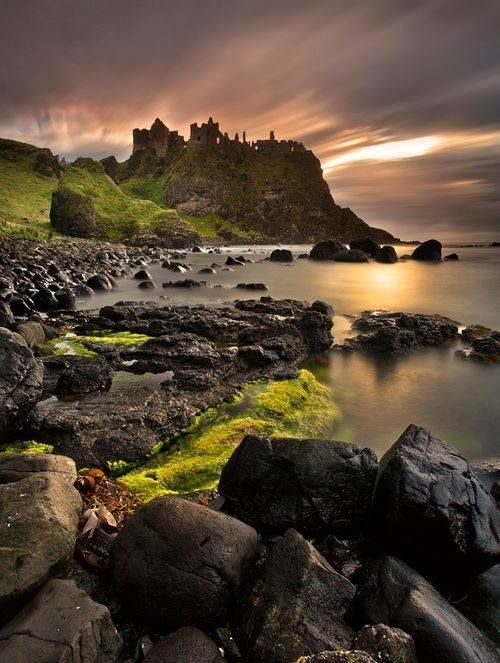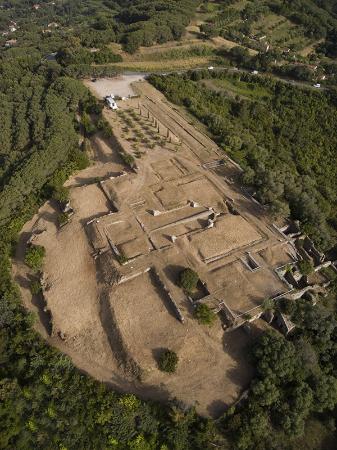 John Ruskin – View of Alps – 1835
John Ruskin – View of Alps – 1835 John Ruskin – View of Amalfi – 1848
John Ruskin – View of Amalfi – 1848 John Ruskin – La Merveille Mont St Michel – 1848
John Ruskin – La Merveille Mont St Michel – 1848 John Ruskin – Old Houses on the Rhône Island, Geneva – 1863
John Ruskin – Old Houses on the Rhône Island, Geneva – 1863 John Ruskin – The Garden of San Miniato near Florence
John Ruskin – The Garden of San Miniato near Florence
Author: Danielle
Ancient Roman frescos in Arles, France
 Archaeologists have unearthed extremely rare ancient Roman frescoes, comparable to those found in the Villa of Mysteries in Pompeii, in the southern city of Arles.
Archaeologists have unearthed extremely rare ancient Roman frescoes, comparable to those found in the Villa of Mysteries in Pompeii, in the southern city of Arles.
The frescoes were painted between 20 and 70 BC.
Archaeologists have compared the frescoes to those found in the villa of Boscoreale and the famous Villa of Mysteries in Pompeii, the ancient Roman town near Naples that was preserved under lava from an eruption of the Mt Vesuvius volcano.
http://www.arles-antique.cg13.fr, http://www.telegraph.co.uk/news/worldnews/europe/france/11733670/Ancient-Roman-frescos-worthy-of-Pompeii-found-in-southern-France.html
Buran Space Shuttle Program relics in Kazakhstan
The abandoned hangar is located at the Baikonur Cosmodrome in Kazakhstan. The Cosmodrome is miles away and still in operation today. Because the NASA Space Program was recently shut down, this is the only area that astronauts can make their way up to the International Space Station via Russian Soyuz space.
The hangar was erected in 1974 for the Buran Space Shuttle Program where technology and design would fuse to create some of the most incredible exploration vessels ever conceived. The Buran Shuttle Program was halted in 1988 but the hangar was operational until 1993 and was the home to three of the most advanced pieces of technology of their time.
The collapse of the Soviet Union caused the demise of this facility in 1993. Sadly, only one shuttle of three ever partook in a mission. The shuttle completed one unmanned orbit before it was grounded and destroyed in a different hangar that collapsed on top of it.
There are two shuttles from the Buran Space Program left and they sit in idle, turning into historic relics, within a forgotten and abandoned building located in Kazakhstan.
http://worldtruth.tv/, http://ralphmirebs.livejournal.com/219949.html,
http://worldtruth.tv/, shuttles.
Landscape and Architecture in Tuscany
Travel moments
Buzludzha Monument (abandoned Communist headquarters in Bulgaria)
This monument located on Mount Buzludzha is the biggest ideological building in Bulgaria. It was built as a tribute to the creation of the Bulgarian socialist movement in 1891. Several access roads were built (today in a really bad shape) from Shipka and from the main road Stara Zagora – Roussée. The road exit for Buzludzha is a gigantic statue of Dimitar Blagoev).
The construction of Buzludzha was made possible thanks to government funds and supporters’ donations for an amount of around 14 186 000 leva (around 7 000 000 €). The site was built by civil engineering troops from the Bulgarian army and volunteers. The master builder was General Delcho Delchev who was in charge of the Stara Zagora civil engineering section. The author of this project was the architect Guéorguy Stoilov. Several famous painters and sculptors have participated to the decoration.
http://www.buzludzha.com/history and http://www.businessinsider.com/abandoned-communist-headquarters-in-bulgaria-2015-5
Fairy Tale Castles in Ireland
Ancient Roman villa watching the sea
One of the wonderful roman villas reveals more on ancient life.
The Roman Villa delle Grotte is situated in the Gulf of Portoferraio, on Elba Island – Livorno, and it dates back to the 1st century BC.
The Villa was built in “opus reticulatum” and it also had an ornamental pool, stretching towards the sea with a heating and a cycling sistem.
The central nucleus of the villa was built along a central axis composed by the pool, which was probably surrounded by a garden. A small granite pier was found in the promontory cove and archaeologists thought it might have worked as a berth for docking boats and ships, in order to get to the Villa.
The Villa was partially destroyed to make room for artillery batteries during the conflicts between France and the Kingdom of Naples from 1799 to 1801.
(www.tuscanypass.com)
Le Grotte stretched toward the sea with gardens, porticoes, stairways and terraces with stunning bay views. A swimming pool encircled by a colonnaded porch, thermal baths, and rooms lavishly decorated with frescoes, marbles and statues made the site a luxury holiday residence.
© Laura Pagliantini
Overlooking Portoferraio’s bay, the once magnificent 1st-century B.C. estate, known as Villa Le Grotte (the Caves) because of the shape of its vaulted facades facing the sea, has long been believed to have been owned by Marcus Valerius Messalla Corvinus.
According to archaeologists Laura Pagliantini, Luisa Zito and Luisa Quaglia, of the Archeo Color Association, the now ruined villa, which is currently closed to the public, has long been associated to Messalla’s patrician family but no evidence was ever found to confirm the speculation.
Startling evidence about Le Grotte’s owner came when archaeologists led by Franco Cambi, professor of methodology of archaeological research at the University of Siena, excavated the area just below the villa. Along with the remains of a large collapsed building, the archaeologists found five dolia — large earthenware vases — complete with their covers. Each vase could hold between 1,300 and 1,500 liters of wine. The vases were stamped with the Latin inscription “Hermia Va(leri) (M)arci s(ervus) fecit,” meaning “Made by Hermias, slave of Marcus Valerius.”
The archaeologists dated the farm to the 1st century B.C. The estate met its demise at the end of the 1st century A.D., when a fire destroyed everything. Fortunately the fire preserved materials made in raw clay, basically cooking them. The dramatic fire is likely the reason why the Roman villa was also abandoned at the end of the 1st century A.D., its most precious furnishing taken away.
The entire detailed story and more images:
http://news.discovery.com/history/archaeology/villa-owned-by-ben-hurs-rival-identified-150216.htm
Travel Inspiration
Need inspiration for a next travel destination ? Use Martin Randall Travel’s brochure. I especially enjoyed the illustrations 🙂
Panoramic World Views
Want to travel but you are not allowed (no matter the reasons) to leave home or office ? Then travel with 360cities. You will find on the site great selected 360 panoramas and great gigapixels panoramas. If you are not sure what these are look here: http://www.360cities.net/. I`ve spent hours travelling and will never can`t get enough 🙂
